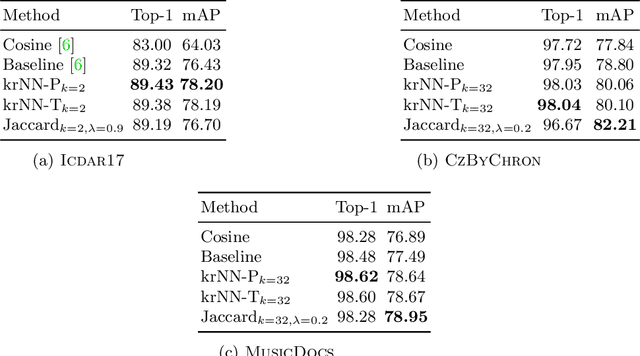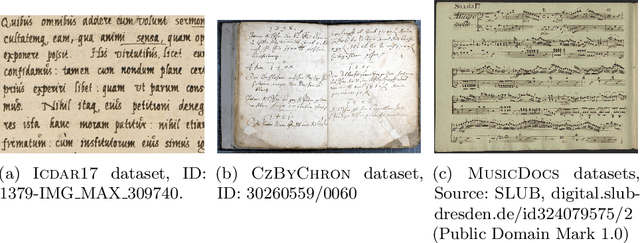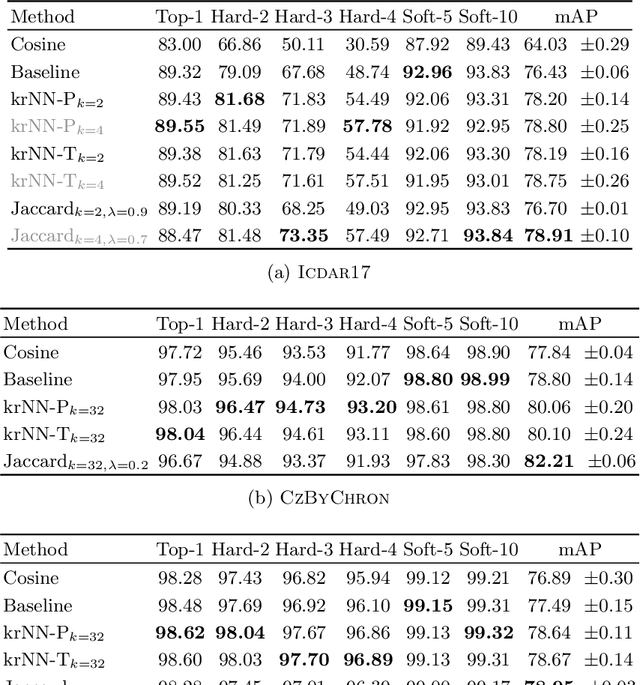Re-ranking for Writer Identification and Writer Retrieval
Paper and Code
Jul 14, 2020



Automatic writer identification is a common problem in document analysis. State-of-the-art methods typically focus on the feature extraction step with traditional or deep-learning-based techniques. In retrieval problems, re-ranking is a commonly used technique to improve the results. Re-ranking refines an initial ranking result by using the knowledge contained in the ranked result, e. g., by exploiting nearest neighbor relations. To the best of our knowledge, re-ranking has not been used for writer identification/retrieval. A possible reason might be that publicly available benchmark datasets contain only few samples per writer which makes a re-ranking less promising. We show that a re-ranking step based on k-reciprocal nearest neighbor relationships is advantageous for writer identification, even if only a few samples per writer are available. We use these reciprocal relationships in two ways: encode them into new vectors, as originally proposed, or integrate them in terms of query-expansion. We show that both techniques outperform the baseline results in terms of mAP on three writer identification datasets.
 Add to Chrome
Add to Chrome Add to Firefox
Add to Firefox Add to Edge
Add to Edge